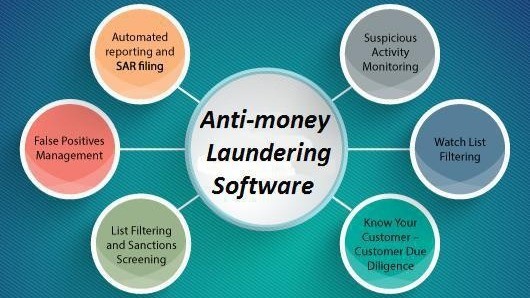𝗙𝗼𝗿 𝗠𝗼𝗿𝗲 𝗜𝗻𝘀𝗶𝗴𝗵𝘁𝘀, 𝗚𝗿𝗮𝗯 𝗦𝗮𝗺𝗽𝗹𝗲 𝗣𝗗𝗙@ https://www.transparencymarketresearch.com/sample/sample.php?flag=S&rep_id=38105
Anti-Money Laundering (AML) solutions consist of various policies, laws, and regulations that helps in preventing financial crimes. These guidelines, policies, laws among others, are set by Global and local regulators which are present around the world which aims to strengthen the functioning of AML solutions. Anti-Money Laundering (AML) solutions are used to detect and warn the institutions regarding money laundering, terrorist financing, fraud, electronic crime, bribery and corruption, tax evasion, embezzlement, information security, illegal cross border transactions among others hugely impacting the economy of the country and hampering its reputation. AML is term which is generally used to depict the fight against money laundering & financial crimes.
The money laundering process includes 3 stages: Placement,
Layering, and Integration.
• Placement: puts the "dirty cash" into the
legitimate financial system and at the same time, hiding its source.
• Layering: or “structuring” hides the source of the money
through a series of transactions and accounting tricks. This activity involves
breaking the funds into small transactions and makes it difficult to detect the
laundering activity.
• Integration: the now-laundered money is withdrawn from the
legitimate account and real records to be used for whatever reasons the
criminals have as a top priority for it.
The estimated amount of money laundered globally in one year
is 2% to 5% of global GDP, or US$800 billion to US$2 trillion – and that’s a
low estimate. Money laundering often accompanies activities like smuggling,
illegal arms sales, embezzlement, insider trading, bribery and computer fraud
schemes. It’s also common with organized crime including human, arms or drug
trafficking, and prostitution rings. Anti-money laundering is closely related
to counter-financing of terrorism (CFT), which financial institutions use to
combat terrorist financing. AML regulations combine money laundering (source of
funds) with terrorism financing (destination of funds).
Beyond the moral imperative to fight money laundering and
terrorist financing, financial institutions also use AML tactics for:
• Compliance with regulations that require them to monitor
customers and transactions and report suspicious activity.
• Protection of their brand reputation and shareholder
value.
• Avoidance of consent orders as well as civil and criminal
penalties that could be levied because of noncompliance or negligence.
• Reduction of costs related to fines, employee and IT
costs, and capital reserved for risk exposure.
Note -
🔸 No products on offer, just expertise. Dive into thorough market research reports here.





0 Comments:
Post a Comment